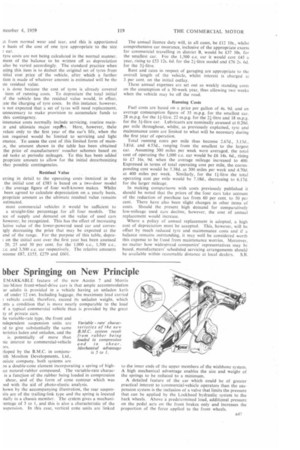bber Springing on New Principle
Page 81

If you've noticed an error in this article please click here to report it so we can fix it.
EMARKABLE feature of the new Austin 7 and Morris ii-Minor front-wheel-drive cars is that ample accommodation ur adults is provided in a vehicle having an unladen kerb of under 12 cwt. Including luggage, the maximum load carried : vehicle could, therefore, exceed its unladen weight, which :nts a condition that is more nearly comparable to the load if a typical commercial vehicle than is provided by the great ty of private cars.
he variable-rate type, the front and ndependent suspension units are ml to give substantially the same teristics laden and unladen, and the is potentially of more than -tic interest to commercial-vehicle Drs.
:loped by the B.M.C. in conjuncith Moulton Developments. Ltd., aciate company, both systems are an a double-cone element incorporating a spring of highLee natural-rubber compound. The variable-rate characis a function of the rubber being loaded in compression shear, and of the form of cone contour which was aed with the aid of photo-elastic analysis.
hown by the accompanying illustration, the rear suspentits are of the trailing-link type and the spring is located itally in a chassis member. The system gives a mechani,antage of 5 to 1, and this is also a characteristic of the uspension. In this case, vertical cone units are linked Variable -rate. characteristics of the new B.M.C. system result from rubber being loaded in compression and in shear. Mechanical advantage
is 5 to I.
to the inner ends of the upper members of the wishbone system. A high mechanical advantage enables the size and weight of the springs to be reduced to a minimum.
A detailed feature of the car which could he of greater practical interest to 'commercial-vehicle operators than the suspension system is the inclusion of a valve that limits the pressure that can be applied by the Lockheed hydraulic system to the back wheels. Above a predetermined load, additional pressure on the pedal acts on the front brakes only and increases the proportion of the force applied to the front wheels_




















































































































